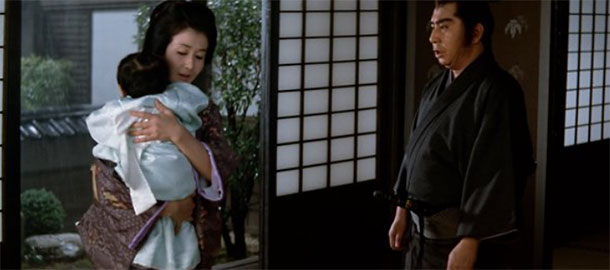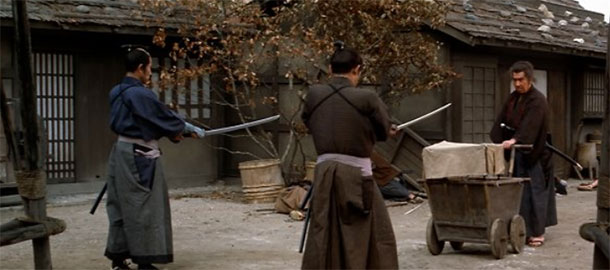The 1970s is the time when the action genre was born. James Bond really got into it, Jackie Chan was taking off in Asia, Bruce Lee took the world by storm, and Clint Eastwood threw away his sombrero and set out to fight crime as Hardy Harry. And in Japan, Ogami Ittō went to the cinema screens. The hero of the famous manga eventually appeared in six films, and the seventh, called Shogun Assassin, was a best-off montage of the best of the previous films. So take this VIM as a recommendation for the entire series. And there are several reasons why you should try this classic.
We are in the historical-action genre, so of course the action plays a role here. Brutal, stylized and effective. Quentin Tarantino paid homage to it in Kill Bill, but there is even more blood splattered from severed limbs here. The Lone Wolf and the Cub is conceived more or less as a collection of stories from wandering around Japan, in which Ogami Ittō lends his services and swords to anyone willing while trying to find the people responsible for the slaughter of his family. But it is still mainly about individual stories connected by endless wandering. Sometimes they come across masked female assassins, other times they come across enemies wanting to avenge someone close to them who was killed by Ogami Ittō, treacherous clans and armies of enemies that need to be cut to pieces.
But it would be a big mistake to take Lone Wolf and the cub just as a bloody sculpture. In addition to undisguised violence (in one scene, Ogami Ittō slices up a hundred enemies), this trip to comic book Japan also offers an unexpectedly lyrical overture. A lot of space is given to the gradually changing relationship between the protagonist and his little son. Tiny Daigorō, who in the famous scene chooses between a sword and a toy, i.e. life and death, gradually turns into his father’s sidekick and for the cold-blooded killer is one of the few bonds with the past and with a time when he could consider himself a good person. Their wordless scenes full of mutual and unspoken love are very powerful and work flawlessly as a contrast to the violence and omnipresent gore.
Lone Wolf and Cub tries to combine over-stylized comic book action with scenes where Ogami Ittō at least momentarily remembers a time when he was still a normal person surrounded by family, love and happiness and not an unstoppable demon of revenge. This contrast of two worlds is sold absolutely flawlessly in the entire series, and the fact that it works is also confirmed by the fact that the story of the shogun’s executioner and his son inspired the relationship of the heroes in Road to Perdition, to a certain extent Logan and, admittedly, The Mandalorian. That combination of exploitative violence, emotions, Tomisabura Wakayama’s chubby charisma and Japanese idiosyncrasies works brilliantly even more than half a century after the premiere. And I would bet that it will inspire the next generation of filmmakers.

